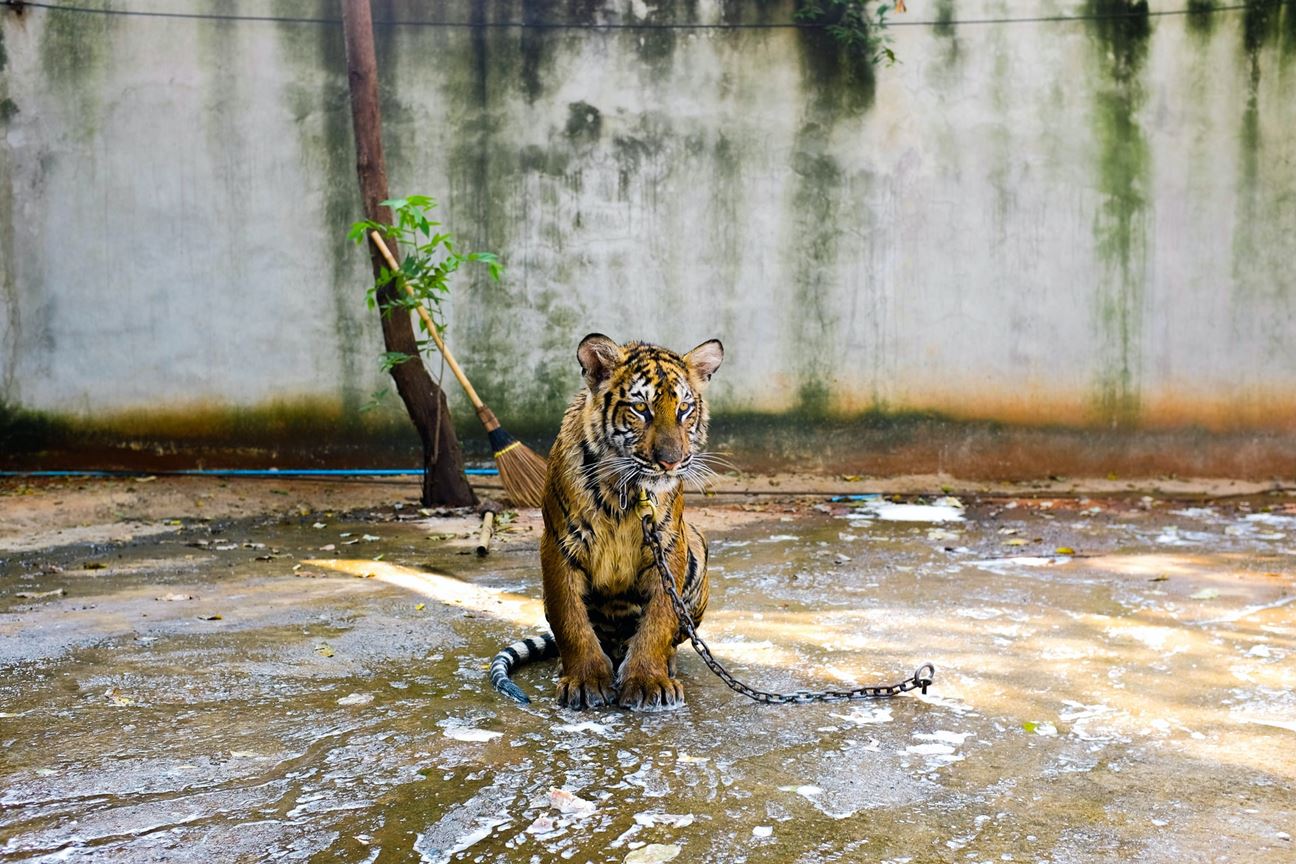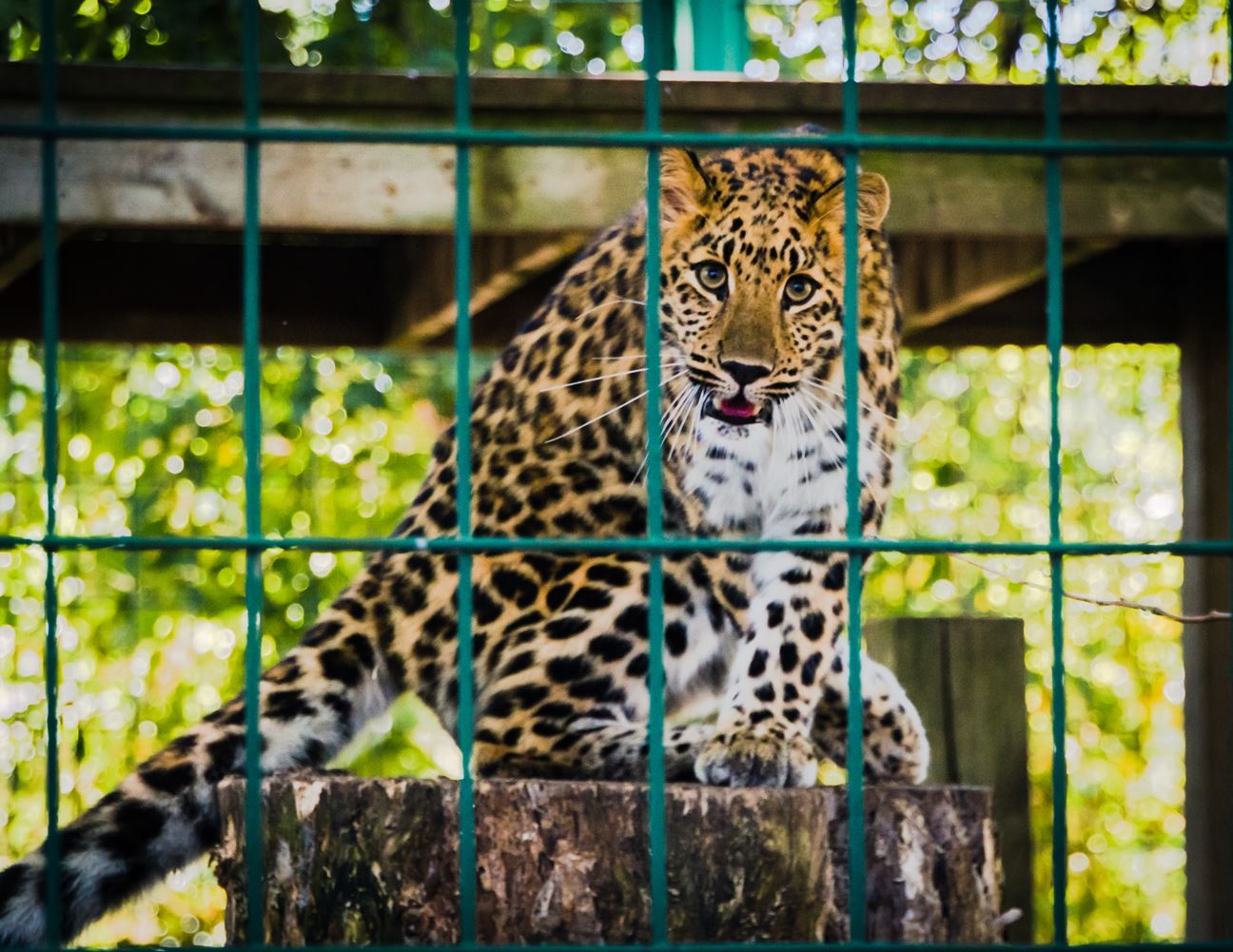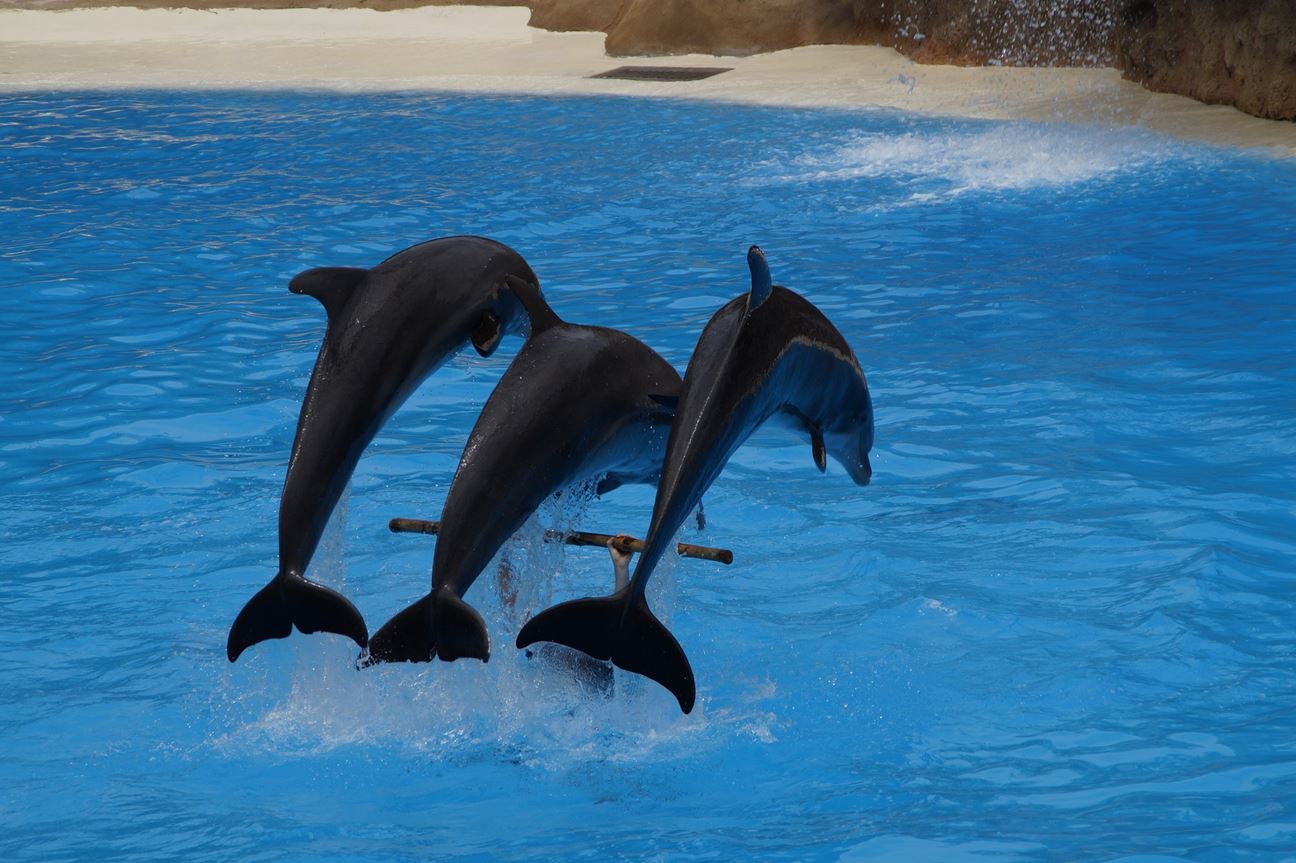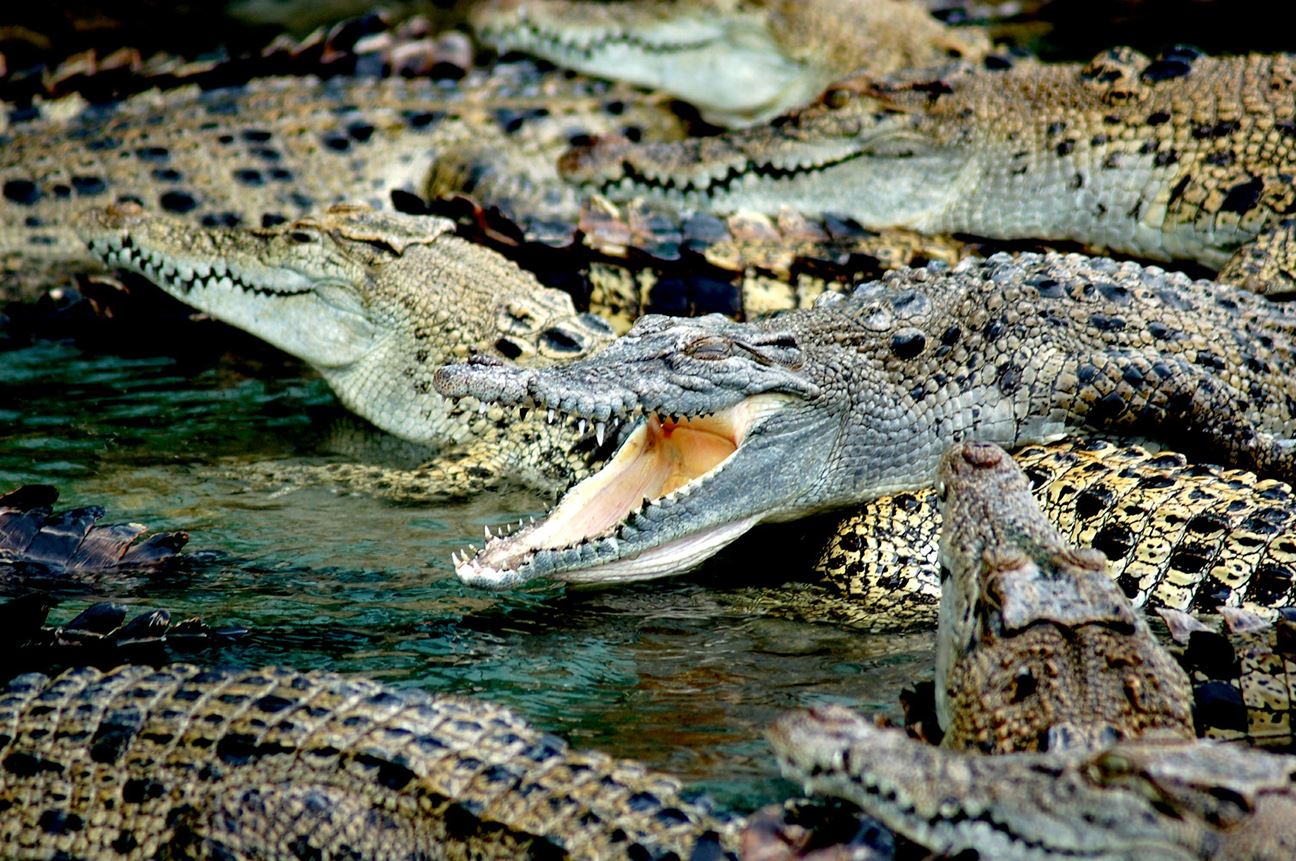Going ‘aww’ over an animal at the zoo seems normal to many. However, it is not. The unseen suffering of wild ‘captive’ animals is hardly ever talked about. It's time we speak up!
“If you can ride it, hug it, or have a selfie with a wild animal, then you can be sure it is cruel. Vote with your feet and don’t go.” – Kate Nustedt, Director of Wildlife at the World Animal Protection.
Posing with tigers is often a highlight for many tourists visiting Thailand. This may be an ‘out-of-this-world’ experience for many, almost like a once in a lifetime opportunity, but have you ever wondered how did the tiger end up there in the first place? Sure, he did not choose to be there. Ever wondered how these big cats feel in response to hundreds of excited tourists making their way in and out of their enclosures, each day, every day, just for the sake of a perfect close-up picture? While it may seem to many that these big cats are happy, well-fed, and well cared for, the behind-the-scenes picture is more desolate.

Many of these cats are kept in captivity from a very young age. They grow up in artificial environments and are likely to stay in such places for the rest of their lives. Animal encounters must often be carefully orchestrated to ensure the safety of visitors/tourists. And for this reason, ‘wildlife tourism’ requires a great deal of discipline to be administered to these animals, of course, through horrendous means.
What is Animal Captivity?
Any non-domestic animal that is kept in a confined space, either temporary or permanent, is a captive animal. These ‘collections’ of animals often live in spaces that are cramped and lonely. Millions of animals across the world live in captivity - be it in zoos, theme parks, aquariums, or circuses. These animals are used against their will, usually for human entertainment. Some may say the reasons are artistic, cultural, or even educational; but whatever the reason, no reason can be good enough to keep animals in confinement.
Captive Wildlife Tourism - Animals for Entertainment?
One research paper (Newsome, Dowling, & Moore, 2004) defines Wildlife Tourism as “tourism undertaken to view and/or encounter wildlife”, which can occur in a “range of settings including artificial environments and natural habitats”. While the non-captive wildlife tourism seems to be a more intense and genuine experience, it requires a great deal of enthusiasm and commitment. Captive wildlife tourism, on the other hand, is less expensive and very convenient. People defend captive animals, debating that this helps conserve the species, plus helps visitors a chance to view rare animals. However, these arguments are questionable. Putting animals on display and making them perform tricks for the sake of amusement and enjoyment of the visitors/tourists can in no way be justified.

It Is Time we Discourage Wildlife Captive Tourism. Because...
Animals in captivity are often fed foods containing polychlorinated biphenyls (PCB) which leads to reproductive difficulties. This and many other such reasons result in growing food concerns at animal enclosures. For example, tigers need to regularly consume raw meat, which provides them with essential nutrients that optimises their overall health. But some centres say red meat is too expensive and hence feed tigers with boiled chicken or even cat food.
They should be roaming free, but instead, animals are given barren and crammed spaces/cages. These spaces are way too small compared to their natural surroundings. For example, dolphins can live and flourish in wild ocean waters, but instead, when in captivity, these fishes are forced to swim endlessly in circles because of lack of space. They even encounter chemicals and other pathogens that can alter their health conditions. This leads to unnatural and painful experiences for the dolphins. All of this just so a bunch of people can ‘swim with the dolphins’
Apart from lack of proper food and living conditions, these animals are beaten, stabbed, or poked into submission. Animals undergo harsh training methods to ensure that their performances are ‘perfect’ and ‘predictable.’ The World Association of Zoos and Aquariums has flagged hundreds of zoos for abuse and ill-treatment of animals. For example, chimpanzees riding bikes or performing circus tricks may seem ‘cute’ to the audience. But these animals are often trained under harsh conditions - they are dragged by the necks, made to wear clothes, and even beaten.
Captivity affects animals on both physical and mental levels. Several animals in confinement are known to suffer from one or more physical and behavioural problems. Lack of natural necessity results in visible sufferings in the form of skeletal deformities and lameness. While self-directed behaviours such as pacing, sham-chewing, and over-grooming are also commonly observed.
There have been links found between the illegal wildlife trade and zoo operations. For example, Thailand’s Royal Forest Department’s Wildlife Protection and Conservation Act prohibits the confinement of hornbills by law. Yet, zoos are known to keep hornbills to attract visitors and tourists. In such a case, zoos contact middlemen, usually villagers, who contact the hunters and illegal wildlife traders that arrange for these birds to come from forests and into the zoos.
At some zoos and circuses, little animals that are still-nursing are dragged away from their mothers. From that point forward, these animals live the rest of their lives in submission. For example, elephants are known to share a close bond with their family members. They move in matriarchal herds and are known to care for and protect one another. When a baby is taken away, both the mother and the calf experience extreme psychological trauma, resulting in a tormented life.
Tourists often ‘pose, pet, play’ and upload these pictures on Instagram and Facebook to show off their unique and brave experiences. But it is time we educate more and more humans and make it known by doing so, they are contributing to animal abuse.
Types of Captive Wildlife Activities/Attraction
A study was done by Oxford University’s WildCRU Research Unit that categorises captive wildlife activities/attractions as interactions with captive animals, animal performances, wildlife farms, and sanctuaries. Let us look at them in more detail and their impact on the animals.

These gentle giants are reduced to slaves by the means of exploitation. Elephant rides are one of the most popular animal-tourist activities. Elephants are used for joy rides, and also to ferry tourists in and out of the jungle, and up and down the hill. This industry is thriving in countries like India, Sri Lanka, Thailand and Cambodia.
- Selfies with the Big Cats

Tiger sanctuaries are incredibly popular in Thailand, where visitors often get to pet and click a close-up photo with these big cats. But in order to keep the tigers docile, they are often fed with sedatives. Even worse, their claws are removed, and the tendons in their legs are cut so that the animal doesn’t make sudden movements or run.
Lion interactions are a popular activity in South Africa, Zimbabwe and Mauritius. While cuddling with the cubs and walking along one of the most feared predators seems to be exciting, most people do not understand that by partaking in these activities, they are contributing towards canned lion hunting. As soon as the cubs grow out into adults, they are kept in a fenced area where a trophy hunter can get a kill.
Green Sea Turtles are more than just sea creatures for the Caymanians. Cayman Islands' largest tourist attraction, the Cayman Turtle Farm (also called the Cayman Turtle Centre), offers visitors the chance to pick, hold and click a photo with the turtles. Panicky handling of turtles often leads to visitors dropping them, which increases the chance of fatal injuries. Former employees of the park have claimed that many of these turtles often tried to get away, but to no avail. These turtles live in shallow, crowded tanks all their lives, and are handled by hundreds of human hands every day. Turtle Stew, the (unofficial) national dish of the Cayman Islands, is a delicacy here. Many animal advocacy groups have written to cruise liners, discouraging them from visiting the turtle farm.
- Dolphin and Orca Performances

Dolphins look mighty cute when they smile. But them smiling is not a sign of them being happy and friendly - rather, it is just their anatomy. Physically, they can never look unhappy. Dolphins that are in captivity show a reduced life expectancy. It has been observed that many a time dead dolphins are replaced by new ones without the public noticing. In open seas, dolphins and orcas are known to dive deep and swim over 150 kilometres every day. Now compare that to living in pools. That plus all the chemical disinfectants that go into the pool. Sadly, at many places, dolphin shows and interactions are still considered normal.
Monkey performances are very common. They resemble circus acts where monkeys are dressed in human-like clothes, made to ride bicycles, play with a basketball, and also dance. While it is believed that these monkeys are trained using positive reinforcement, the truth is pretty harsh. Physical abuse under the pretence is discipline training is very common. This kind of monkey business is very common in countries like Indian, Thailand and Japan.

These farms are known to house hundreds of crocodiles. Enclosures are tightly packed — sometimes narrower than the body of the crocodile. The overly restrictive living conditions lead to aggression and resultant injuries among many. Moreover, many crocodile farms in Vietnam are known to slaughter and skin these crocodiles to supply for luxury leather bags.
How to Be an Animal-Friendly Tourist?
Wild animals must belong to the wild. To help these animals, you must first become a responsible and animal-friendly tourist. While on a holiday, if you come across animals that are captive or used for entertainment, make sure you ask the right questions to the right persons. Questions such as ‘Does the animal have access to food and water?’, ‘Is there a shelter where the animal can rest?’, ‘Is the animal in pain, or is suffering?’, ‘Is this the animal’s natural behaviour, or is this cruelty?’ can help you get a better idea of the state of animals.
If you come across any wrongdoing or inappropriate treatment towards an animal, record and report to the local authority or appropriate organisations. Stop patronising zoos and animal enclosures. Post your holiday, make sure to spread the word. Use social media to inform your friends and family about your experiences.
Over the past few decades, tourism has unintentionally has fueled animal cruelty. People’s perceptions of animal captivity are changing, but there is still a long way to go. It is time, the harming, scarring, and terrorising of animals must stop. Tell others, too. Animal entertainment is equal to animal abuse!
![]()